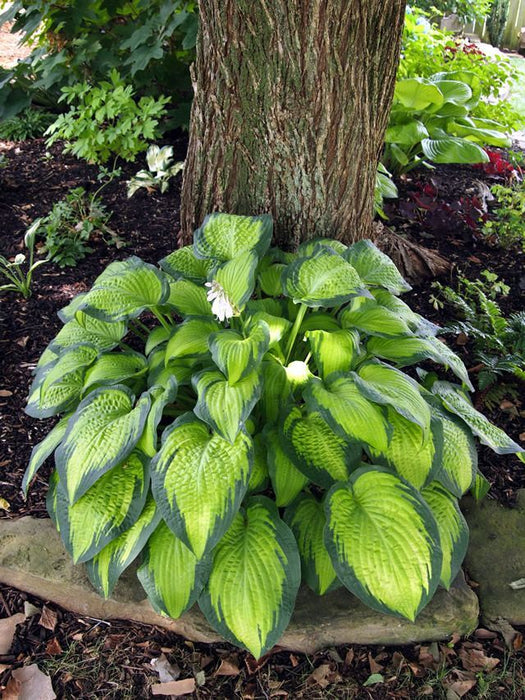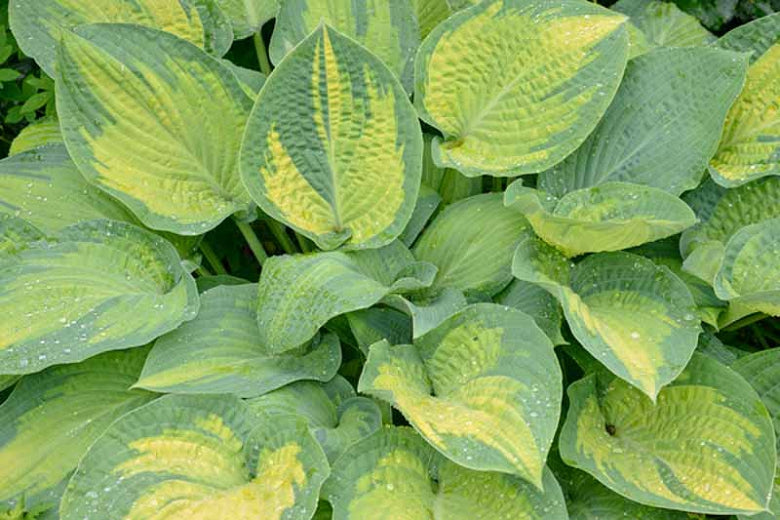
hosta paul's glory (Bareroot PLANT) SHADE PERENNIAL FOLIAGE
Most orders are processed by the next day
Select your desired size and/or color from the available options.
- Captivating; ever-evolving foliage hues
In spring, leaves have blue-green margins and chartreuse centers. By summer, the margins turn dark green and the centers become bright gold
- Ovate leaves are corrugated and of good substance, making them more slug resistant than other varieties
- Pale lavender, bell-shaped flowers appear on 40" scapes in midsummer
- Attracts both hummingbirds and songbirds
Hostas are exceedingly popular perennials in today's gardens due to their versatility in the landscape. Their subtle colors, tall flower scapes, and broad, coarse leaves fill a niche in garden designs that few other plants can achieve. Their large leaves provide excellent coverage for dying bulb foliage. Hostas also grow well in city environments where the air may be polluted by car exhaust, etc.
Mass Planting- Border Edging
- General Garden Use
- Groundcover
Hostas grow best in moist, well-drained, highly organic soils with a pH between 5.5 and 7.5. Sandy loam is better than clay because it provides more aeration for the roots. High-filtered or dappled sunlight is necessary for clean, healthy growth. Morning sun is tolerable and will help to intensify the leaf colors, but hot afternoon sun is usually deadly to hostas. They are most at home in shady, woodland settings and often work well as specimen or edging plants.
Hostas are very easy to propagate through division. This can be done at any time during the growing season with little or no affect on the growth of the parent plant. Since each division should have at least 3 eyes, plants should be allowed to mature for several years before being divided.
Especially in northern zones, hostas should be mulched with a layer of finely shredded organic material to prevent heaving in the winter. Mulch is beneficial because it retains moisture around the plant's roots, but it is also the ideal place for slugs to hide. Watch for holes in the center of the leaves. If they are present, so are slugs. Applying a slug bait in early spring when new shoots are beginning to emerge will help to reduce the slug population. After a few years when plants are firmly established, the mulch can be removed completely, which should eliminate the slug problem altogether. Also be sure to clean all hosta foliage out of the garden in early winter after the plants have gone dormant. By doing so, you will be ridding the area of the eggs of slugs and other leaf-eating insects.
LET OUR CUSTOMER SPEAK FOR US

![[Seeds] - Caribbeangardenseed](http://caribbeangardenseed.com/cdn/shop/files/gift-card-gift-card-1_1024x1024_dfa857db-9150-4315-a362-7f0bb3fb9c47_60x28.png?v=1703978838)



